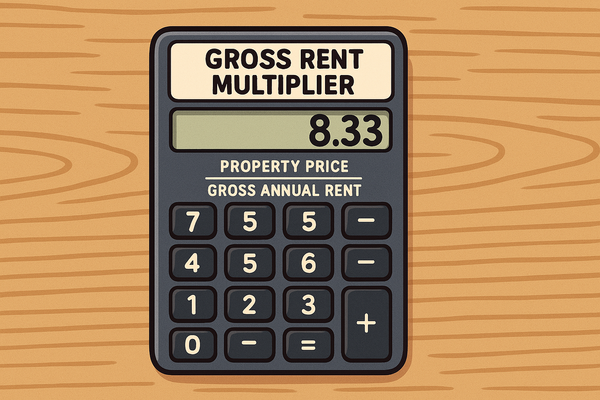South Dakota Squatters Rights Guide: Understanding Adverse Possession Laws
The statutory period for an adverse possession claim can be reduced to 10 years when the squatter both maintains color of title AND pays property taxes on the disputed land

From a business mistakenly maintaining land they didn't realize they didn't own—but ultimately acquired through adverse possession—to a legally dissolved ghost town turned squatter refuge in the wide open landscape of South Dakota, the Mount Rushmore State offers fascinating illustrations of how property rights can shift despite legal documentation.
South Dakota's 20-year adverse possession requirement ranks among the nation's longest, yet determined squatters can still gain legal ownership through continuous occupation.
Understanding these laws isn't just academic—it's essential protection for South Dakota property owners facing potential squatters, especially with rural properties that might go unmonitored for extended periods during harsh winters.
This guide examines how squatters differ from trespassers, explains adverse possession requirements, and provides property owners with practical strategies to protect their investments under South Dakota law.
Introduction to Squatters' Rights in South Dakota
- Definition of squatters vs. trespassers in South Dakota: In South Dakota, a squatter is someone who occupies a property without legal ownership or permission, while a trespasser is someone who enters property without permission for a short period.
- Basic overview of adverse possession in South Dakota: South Dakota law allows for adverse possession—the legal process by which a squatter can gain legal ownership of property through continuous occupation.
- Why property owners should understand these laws: South Dakota property owners must understand these laws to protect their property rights and prevent potential squatters from gaining legal claim to their land.
- Historical purpose of adverse possession laws: Adverse possession laws originated to ensure productive use of land and resolve boundary disputes, particularly in rural areas like those common throughout South Dakota.
Squatter Snippet: Real Case from South Dakota
In 2023, a Watertown business found itself in an extraordinary legal battle over land near Highway 212. The business had purchased property that included a section of land not actually covered in their deed.
For over 20 years, the previous owners had been using and maintaining this portion of land that legally belonged to a neighboring landowner. The neighbor had paid property taxes on this land for 20 years and held the legal deed.
Attorney Joe Erickson represented the business in what would become a landmark case in South Dakota property law. The trial court ruled in favor of the business, effectively transferring ownership away from the legal deed holder.
The neighbor appealed to the South Dakota Supreme Court, but the Court unanimously affirmed the trial court's decision, reinforcing that actual use and occupation over the statutory period supersedes paper title, even when the paper title holder is unaware of the encroachment.
Key Timeline: Statutory Period in South Dakota
- Required occupation period: 20 years in South Dakota
- Continuous possession requirement: Occupation without significant gaps
- Comparison with neighboring states:
- Timeline exceptions:
- The statutory period can be reduced to 10 years when the squatter both maintains color of title AND pays property taxes on the disputed land
CHART: Adverse Possession Timeline Comparison
| State | Required Years | Special Conditions |
|---|---|---|
| South Dakota | 20 years | 10 years with color of title AND tax payment |
| North Dakota | 20 years | None specified in provided research |
| Minnesota | 15 years | None specified in provided research |
| Nebraska | 10 years | None specified in provided research |
Quick Guide for Property Owners
South Dakota's adverse possession laws contain some of the most stringent requirements in the United States, with a standard 20-year occupation period that ranks among the longest nationwide. This extended timeframe provides substantial protection for South Dakota property owners compared to many states with shorter periods.
However, as demonstrated by the shocking 2023 Highway 212 case in Watertown, even paying property taxes and holding legal ownership documents may not be enough to prevent adverse possession if someone openly uses your land for the statutory period.
- Know your timeline: Squatters can claim rights after 20 years of continuous occupation
- Documentation matters: Keep property records, tax receipts, and inspection logs
- Regular monitoring required: Vacant properties are most vulnerable
- Legal obligation: Self-help eviction methods are illegal in South Dakota
- Act quickly: The longer squatters remain, the stronger their potential claim
- Proper notices: Follow legal procedures when removing unauthorized occupants
Prevention: Protecting Your Property
South Dakota's predominantly rural character creates unique challenges for property owners trying to prevent adverse possession claims. Remote properties may go unmonitored for extended periods, especially during harsh winter months when access is limited.
Additionally, the state's case law shows that boundary disputes are particularly common in rural areas where precise surveys may be historical or unclear. Urban properties typically have more witnesses to occupation, which can potentially strengthen notorious possession evidence if a claim arises.
- Regular inspections:
- Visit property at least once every few months
- Document each visit with photos/notes
- Effective security measures:
- Secure all entry points
- Consider alarm systems
- Install motion-activated lighting
- Clear signage:
- Post "No Trespassing" signs visibly
- Mark property boundaries clearly
- Property management options:
- Hire professional property management for vacant properties
- Consider rental options for long-term vacancies
- Documentation practices:
- Keep tax payment records
- Maintain utility connections
- Take dated photographs regularly
CHART: Property Risk Assessment Matrix
| Property Type | Risk Level | Recommended Prevention | Estimated Cost |
|---|---|---|---|
| Vacant Land | High | Regular inspections, clear boundary markers, posted signage | $-$$ |
| Abandoned Building | High | Security systems, regular property management checks | $$-$$$ |
| Seasonal Property | Medium | Property management service, security system | $$-$$$ |
| Investment Property | Medium | Professional property management, tenant screening | $$-$$$ |
Removing Squatters: Step-by-Step Process
South Dakota law requires property owners to follow formal eviction procedures to remove squatters, treating them similar to tenants for legal purposes. Simply changing locks, removing belongings, or using intimidation tactics is illegal and may expose property owners to legal liability.
The process must follow specific legal channels through South Dakota's courts with proper notice periods and enforcement by authorized officials.
- Document the situation:
- Take photos/video of occupation
- Gather ownership documents
- Issue proper written notice to vacate
- 3-Day Notice to Quit and Vacate is the standard notice for most situations
- Immediate Notice to Quit and Vacate for lease violations, committing waste, or false service animal claims
- File appropriate legal complaint:
- File a complaint of forcible detainer with the South Dakota Circuit or Magistrate Court
- Include all required documentation
- Attend court hearing
- If successful, obtain order of restitution/eviction
- Sheriff enforces removal, not property owner
- What NOT to do:
- Do not change locks yourself
- Do not shut off utilities
- Do not remove squatter's belongings
- Do not threaten or intimidate
- Do not use physical force
- Timeline expectations:
- Notice period: 3 days
- Court processing: 2-4 weeks
- Eviction enforcement: 3-7 days after judgment
CHART: Eviction Process Timeline
The eviction process in South Dakota follows specific timelines established in state civil procedure codes. While exact processing times may vary depending on court caseloads and whether the squatter contests the action, property owners should anticipate the process taking several weeks.
South Dakota law requires proper notice periods and only authorized officials like county sheriffs can physically remove squatters after a court order.
[Discovery of Squatter] → [Documentation: 1-2 days] → [Notice to Vacate: 3 days] →
[Court Filing: 1 day] → [Waiting for Hearing: 2-4 weeks] → [Court Hearing: 1 day] →
[If successful, Wait for Order: 1-3 days] → [Sheriff Enforcement: 3-7 days] → [Property Returned]
Total estimated timeline: 3-6 weeks
Legal Requirements for Adverse Possession
South Dakota courts require clear and convincing evidence of all elements of adverse possession, commonly known as the "OCEAN" criteria (Open, Continuous, Exclusive, Adverse/Hostile, Notorious).
The burden of proof lies heavily on the person claiming adverse possession, making successful claims difficult but not impossible. South Dakota case law, including recent decisions like Fuoss v. Dahlke Family Limited Partnership (2023), demonstrates the court's continuing strict interpretation of these requirements.
- Hostile Claim
- In South Dakota, the squatter must occupy without the legal owner's permission
- If both adjoining property owners mistakenly believed in the location of a boundary line, the element of hostility will be satisfied
- The hostility requirement is met when the possession is "under a claim of title exclusive of any other right"
- Actual Possession
- Physical presence on the property
- Making visible improvements to the property, such as building structures or cultivating land
- Property must either be protected by a "substantial enclosure" or be "usually cultivated or improved"
- Open and Notorious Possession
- The occupation must be visible and obvious to the community and property owner
- The squatter must make no attempt to hide their occupation
- The occupation must be "as to give the true owner notice of actual possession and to put him on inquiry as to the invasion of his rights"
- Exclusive Possession
- The squatter must possess the property solely, excluding all others including the legal owner
- The squatter cannot share occupation with the legal owner, tenants, or licensees
- They must prevent others from using the property as a true owner would
- Continuous Possession
- Occupation must be uninterrupted for the full statutory period (20 years, or 10 years with color of title and tax payment)
- Even short vacations can potentially interrupt continuity
- The possession must be "continuous for the statutory period"
CHART: Adverse Possession Requirements Matrix
| Requirement | Required in South Dakota? | Evidence Courts Accept | Common Pitfalls |
|---|---|---|---|
| Hostile Claim | Yes | Occupation without permission, behavior as true owner | Having or claiming to have owner's permission |
| Actual Possession | Yes | Physical presence, improvements, cultivation | Occasional visits without substantial use |
| Open & Notorious | Yes | Visible occupation, community awareness | Hiding occupation, secretive use |
| Exclusive | Yes | Sole possession, excluding others | Sharing with owner or others |
| Continuous | Yes | Uninterrupted use for 20 years (or 10 with color of title and tax payment) | Significant gaps in occupation |
Frequently Asked Questions
- "Can I remove squatters myself?"
- No, self-help eviction is illegal in South Dakota
- Must follow legal eviction process
- "Do squatters have to pay property taxes?"
- Tax payment is not required for the standard 20-year adverse possession claim
- However, paying taxes reduces the required period to 10 years when combined with color of title
- "What's the difference between a squatter and a trespasser?"
- Trespassers: Short-term unauthorized presence
- Squatters: Ongoing occupation with potential adverse possession claim
- "Who should I contact first - police or sheriff?"
- For immediate safety concerns: Police
- For eviction enforcement: Sheriff
- "Can squatters claim abandoned property?"
- Yes, if all adverse possession requirements are met
- Abandonment may actually strengthen their claim, as seen in the case of Lily, South Dakota
- "How quickly can I evict a squatter?"
- Typical timeline: 3-6 weeks
- Factors affecting timeline: court schedule, appeals, evidence quality
CHART: Decision Tree for Property Owners
South Dakota law establishes clear distinctions between criminal trespass and civil squatting situations. Law enforcement's role differs significantly depending on the nature and duration of the unauthorized occupation.
Recent entry situations are typically handled as criminal trespass, while established occupations require civil eviction procedures. South Dakota courts have consistently upheld that self-help evictions are illegal and can result in liability for property owners.
Discovered Someone on Your Property
├── Emergency/Dangerous Situation? → Yes → Call Police
│ └── No ↓
├── Recent Entry (Less than 24 hours)? → Yes → Call Police (Trespasser)
│ └── No ↓
├── Evidence of Established Occupation? → Yes → Legal Eviction Process Required
│ └── No ↓
└── Uncertain Situation → Consult Attorney Before Taking Action
Recent Legislative Changes in South Dakota
While the research doesn't indicate significant legislative changes within the past three years specific to adverse possession, South Dakota's legal framework remains relatively stable with consistent judicial interpretation through recent case law decisions.
The South Dakota Supreme Court continues to uphold traditional adverse possession principles, as demonstrated in cases like Fuoss v. Dahlke Family Limited Partnership (2023), which reaffirmed key requirements including the need for "clear and convincing evidence" of all elements.
- Recently Passed Laws:
- South Dakota's adverse possession and landlord-tenant laws have remained relatively stable in recent years
- The state legislature has not made significant changes to the statutory framework governing adverse possession
- Pending Legislation:
- No specific pending legislation directly affecting adverse possession was identified in the research
- Property owners should stay informed about any future legislative developments
- Legislative Trends:
- South Dakota continues to maintain one of the longest statutory periods for adverse possession nationwide
- The state's approach remains focused on protecting legal property owners through stringent requirements
State-Specific Considerations
- Color of Title in South Dakota:
- Definition: Irregular ownership document that appears valid but contains legal defects
- Impact on statutory period: Reduces required period from 20 to 10 years when combined with tax payment
- Documentation requirements: Must appear to be a genuine title document
- Burden of proof requirements:
- Squatter must prove all elements of adverse possession
- Evidence standards in South Dakota courts require "clear and convincing" evidence
- "The burden of proving title by adverse possession is upon the one who asserts it"
- Recent legal developments:
- Erickson v. Neighbor (2023): In this landmark Watertown case, attorney Joe Erickson successfully argued on behalf of a business that had purchased land near Highway 212, including a portion not covered in their deed. The previous owners had openly used and maintained this land for over 20 years, despite it legally belonging to a neighboring landowner who held the deed and had paid property taxes on it for two decades.
- When the case went to trial, the court ruled in favor of the business, effectively transferring ownership away from the legal deed holder. The neighbor appealed to the South Dakota Supreme Court, but the Court unanimously affirmed the lower court's decision. This case powerfully illustrates that in South Dakota, actual use and occupation over the statutory period supersedes paper title, even when the paper title holder has diligently paid taxes and was completely unaware of the encroachment.
- Erickson v. Neighbor (2023): In this landmark Watertown case, attorney Joe Erickson successfully argued on behalf of a business that had purchased land near Highway 212, including a portion not covered in their deed. The previous owners had openly used and maintained this land for over 20 years, despite it legally belonging to a neighboring landowner who held the deed and had paid property taxes on it for two decades.
- Fuoss v. Dahlke Family Limited Partnership (2023): In this recent South Dakota Supreme Court case, the court provided a clear reaffirmation of the stringent standards required for adverse possession claims. The justices emphasized that adverse possession requires "clear and convincing evidence" of "occupation that is open and notorious, continuous for the statutory period, and under a claim of title exclusive of any other right." The court further clarified that the claimant's occupation must give "the true owner notice of actual possession and put him on inquiry as to the invasion of his rights."
- How South Dakota differs from neighboring states:
- Statutory period differences: South Dakota's 20-year requirement is among the longest nationwide
- Unique requirements: South Dakota allows a reduced 10-year period only when both color of title AND tax payment are present
- Enforcement variations: South Dakota strictly interprets continuous and exclusive possession requirements
CHART: South Dakota vs. Neighboring States Comparison
| Factor | South Dakota | North Dakota | Minnesota | Nebraska |
|---|---|---|---|---|
| Statutory Period | 20 years | 20 years | 15 years | 10 years |
| Color of Title Impact | Reduces to 10 years with tax payment | Not specified in research | Not specified in research | Not specified in research |
| Tax Payment Required | Optional, reduces period with color of title | Not specified in research | Not specified in research | Not specified in research |
| Special Conditions | Improvements/substantial enclosure required | Not specified in research | Not specified in research | Not specified in research |
| Strictness Rating | 4/5 | Not specified in research | Not specified in research | Not specified in research |
Advanced Legal Process
- Court proceedings in South Dakota require filing a complaint of forcible detainer with the Circuit or Magistrate Court
- Evidence requirements include proof of ownership and documentation of the squatter's occupation
- Potential outcomes range from complete eviction to partial adverse possession rulings in boundary disputes
- Monetary judgments may be awarded for property damage or lost rent
- Impact on property title can be significant, potentially requiring title clearing procedures
- Special provisions exist for legally incompetent individuals, with potential tolling of the statutory period
Real-World Examples
- The Highway 212 Case (2023): This extraordinary legal drama in Watertown became a cautionary tale for property owners across South Dakota. The dispute centered on a commercial property near Highway 212, where a business discovered that part of what they thought they purchased wasn't included in their deed. For over 20 years, the previous owners had used and maintained a section of land that legally belonged to a neighboring landowner.
- Despite the neighbor having paid property taxes and holding legal title to the disputed land for two decades, the South Dakota Supreme Court ultimately ruled in favor of the business, demonstrating the profound power of adverse possession laws to override documented legal ownership when property goes unused by its rightful owner.
- The Ghost Town of Lily (2023): In 2017, the Day County court officially dissolved the town of Lily, South Dakota after its population reached zero. What makes this story particularly fascinating is that after the town was legally dissolved, people mysteriously returned to live among the abandoned buildings. Urban explorers who visited in 2023 discovered "one, possibly two residents" living in what was essentially a legal limbo—residing in a town that no longer existed according to official records.
- Without municipal infrastructure or authorities, these residents created a modern version of homesteading, occupying buildings in a place that had been officially removed from the map, raising unique questions about property rights when an entire community is legally abandoned.
Resources
- Current South Dakota Squatters Rights Laws:
- South Dakota Unified Judicial System: https://ujs.sd.gov/
- South Dakota Legislature: https://sdlegislature.gov/
- Last updated: March 2025
- Legal Services:
- East River Legal Services: Provides legal assistance for qualifying low-income individuals
- South Dakota Bar Association: Offers attorney referrals for property law matters
Legal Disclaimer
DISCLAIMER: The information provided in this guide is for general informational purposes only and should not be construed as legal advice on any subject matter. The content contained herein does not establish an attorney-client relationship.
This guide about South Dakota squatters' rights and adverse possession laws is intended to provide general information and should not be relied upon as legal advice. Laws and regulations regarding property rights, adverse possession, and eviction procedures vary by jurisdiction and may change over time. The information presented here may not reflect the most current legal developments or address your specific situation.
No reader should act or refrain from acting based on information in this guide without first seeking professional legal advice. Property owners dealing with squatters should consult with a qualified attorney licensed to practice in their jurisdiction for advice tailored to their particular circumstances.
The authors, publishers, and distributors of this guide expressly disclaim all liability in respect to actions taken or not taken based on any or all of the contents of this document. They shall not be responsible for any errors or omissions in this information or any consequences arising from its use.
This guide is provided "as is" without warranty of any kind, either express or implied, including but not limited to implied warranties of merchantability, fitness for a particular purpose, or non-infringement.
Copyright © 2025 LandlordDoc.com. All rights reserved.





